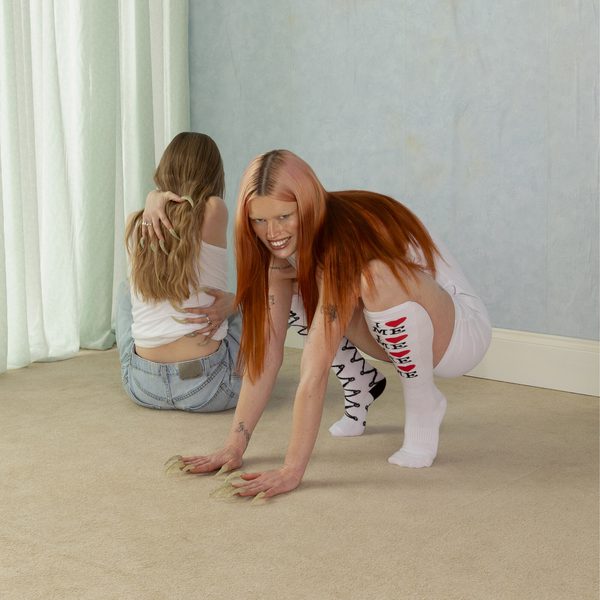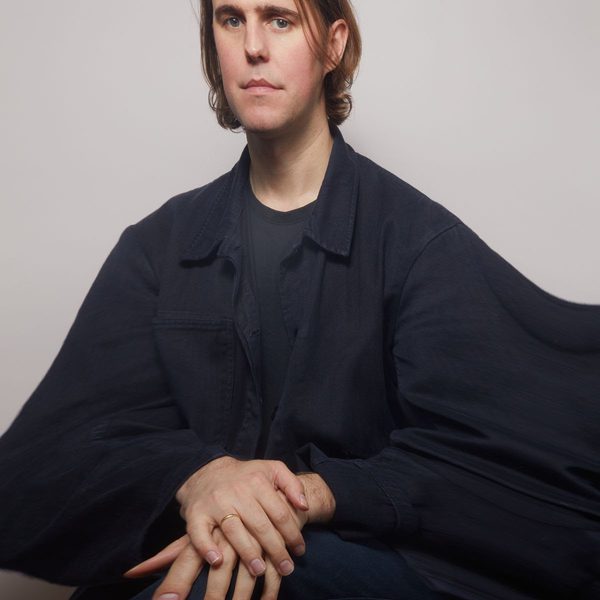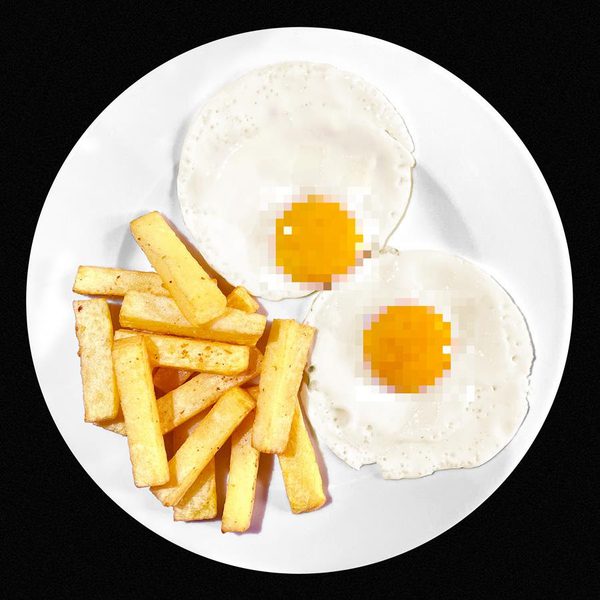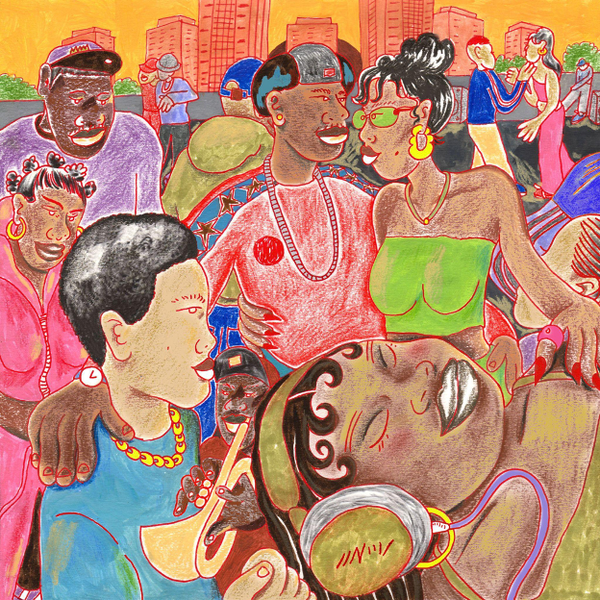
More than the sum of its parts
Conor Oberst, Mike Mogis and Nate Walcott tells Claire Biddles how artistic equality was the key to making the first Bright Eyes album in nine years.
“I do not read the reviews/I am not singing for you” sang 22-year-old Conor Oberst with a mixture of haughty arrogance and fuck-you nihilism on “Let’s Not Shit Ourselves”, the sprawling finale to Bright Eyes’ 2002 masterpiece Lifted or The Story Is in the Soil, Keep Your Ear to the Ground.
Now aged 40, Oberst is back with his bandmates Mike Mogis and Nate Walcott, and is readying to release Down In The Weeds, Where The World Once Was, the first Bright Eyes album in nine years. Sat in his chintzy kitchen in Omaha, Nebraska, drinking from an outsized mug that reads ‘Josephine’, the fuck-you nihilism is still there, but has developed into something a little more complex.
“I can remember doing interviews when I was a 20-year-old kid, and being like, I don’t give a shit about what people think about my music,” recalls Oberst, still boyish, with a baseball cap covering his long black hair. “I wanted to be like The Replacements or something – fuck everybody, I don’t care if you like it. But if I’m honest with myself, that was probably a bit of a put on at the time. Now it’s actually true, I don’t care! I fully manifested my reality.”
Down In The Weeds… is a wonderful, dense, rich album – their tenth overall, and their first since The People’s Key in 2011. It is immediately recognisable as quintessentially Bright Eyes, with its majestic melodrama and ten-feet-tall emotions, and in the way it weaves disparate sonic elements – orchestras, lo-fi guitar, eclectic instrumentation and field recordings. It’s as audacious as Lifted… was almost 20 years ago. The band’s refusal to shrink themselves or mature graciously is where their don’t-give-a-shit attitude comes out. You want pretension? They’ve got it.
“I feel like in the past that’s always been a criticism of our band, being pretentious,” continues Oberst, “and I think we absolutely are pretentious – not as people, but with the music. We’ve always made big conceptual records that were theatrical and probably over the top to some people’s ears. But I’m not embarrassed about that. I grew up in the ‘90s listening to indie rock, where everyone was looking at their shoes and it wasn’t cool to try that hard. By the time I got to be in my early 20s doing our band I was like, fuck that.”

Although ‘Bright Eyes’ has often been interpreted as a synonym for ‘Conor Oberst’, the band has always been a group project, built up from the raw material of Oberst’s confessional and political songs. The band’s return from their nine-year hiatus is stanchly as a three-piece of equal parts – a reflection of the new way of working that they developed for the album. “With previous Bright Eyes records I would bring a batch of songs and present them to Nate and Mike, and we would all collaborate and make the arrangements and come up with the production, concepts and ideas,” explains Oberst. “That was all done together, but for the most part the songs came more or less finished. With this album, we wanted to start at the ground floor and have it be much more collaborative from the beginning.”
The idea to get the band back together came from Oberst, who floated the idea to Walcott at a Christmas party in 2017. He immediately agreed, and the two excitedly called Mogis from the bathroom. They caught him while he was Christmas shopping at a mall in Omaha: he also immediately agreed. Although they kept the news of the project’s reanimation astonishingly quiet – fans were shocked when their Instagram teased new material in January – they started working on the album pretty much immediately after that initial phone call. “The first year was just writing and figuring out the songs,” Oberst says of their new process. “Living with a progression and trying to come up with a vocal melody or lyrics that I connected to. For every one of the ideas that got recorded there were five more that got thrown away.” Outside the band, Walcott is primarily an arranger and composer, Mogis is a producer and engineer, and Oberst is a singer-songwriter – these roles were largely replicated within the writing and recording process, but with organic movement between.
This was new ground for all three members. “For me it’s a different experience to write to someone else’s musical ideas,” says Oberst. “Even with the songs that I did write more traditionally, I would give them to these guys and say – can you come up with a chord progression that’s more interesting? Because I usually just do it folk singer-style. Instead of playing a G chord here let’s make it a special…” he thinks. “Whatever… a G ninth... diminished!”
“And that’s no disrespect to the G chord you know!” chimes Mogis brightly, from his seat at the desk of his studio in Omaha – just up the road from his self-deprecating friend. Even though Oberst is only half-joking around, Mogis and Walcott are always quick to half-jokingly lift him up again, and vice-versa. Such is the dynamic of their friendship and working relationship – they know what strengths they bring to the group, but they know to gently remind each other that each person brings his equal share. “G, C, A, minor F? It’s nice!” says Walcott.
Oberst brings up the example of the second song on the album, “Dance and Sing”. It’s got that quintessential Bright Eyes thing: an almost ancient-sounding folk melody elevated by complex waves of orchestration and melancholy country-folk instrumentation. “If you would’ve heard the demo for that it was just me hitting a C chord, doing my thing,” Oberst says. “Then I gave it to Nate and next thing I know it sounds like a Louis Armstrong song or something. He has a harmonic sense, a skill set that I don’t possess because I never went to music school.”
“Therein lies the beauty of collaboration,” agrees Walcott, who is also speaking from a studio of sorts – a room in his LA home where he writes, records and arranges surrounded by instruments. “Everybody brings in their fortes. Which is what I love about working with these guys: everyone is receptive to each other’s strengths, and that’s what makes it fun.” There’s a strong element of ‘kill your darlings’ in this kind of non-hierarchical collaborative work that doesn’t exist so much in other kinds of collaboration – not being too precious, trusting each other to serve the songs. Walcott agrees: “It requires a lot of setting aside. Your first instinct might be ‘I love this’ – but it is a first idea, it requires some shaping in the service of working with other people.”
Oberst is often asked what the difference is between a Bright Eyes album and a Conor Oberst solo album, of which he has released three during the band’s hiatus. “The main difference is that with my shit the buck stops with me, I get the final cut. But with Bright Eyes the goal is that all three of us are equally happy with the final product.” This inter-band equality derives from – and is kept in check by – the dynamic of the friendship between the three musicians. Each distinct personality is complementary and balanced: Mogis is the dad-like joker, Walcott is softly spoken but more serious, and Oberst is scampish and occasionally flirtatious. Even when they’re just chatting shit over a video call, it’s easy to interpret how they work together.
During the band’s hiatus, each member was kept busy with multiple projects – did they bring anything from these into the studio with Bright Eyes? Walcott and Oberst instinctively turn to Mogis, arguably the most quietly prolific of the group (“Enlighten us Michael!” says Oberst) “I just think experience,” says Mogis, who mixed albums for artists including First Aid Kit, Jenny Lewis and Phoebe Bridgers during the hiatus. “I have gotten better over the last ten years, working with good artists. Some of the musicality of the things that Nate and I work on outside of Bright Eyes also informs our sensibilities when we get together to work on Bright Eyes stuff.” Walcott and Mogis frequently work on film and TV scores together, and are currently composing the music for a TV adaptation of The Stand by Stephen King.
“I feel as if writing music for film or TV is an exercise in killing your darlings,” explains Walcott. “You’re doing that from start to finish. That’s 100% helped with approaching ideas for Conor, trying to get inside someone’s else’s head.”
“What would Conor do?” laughs Mogis.
“What would Conor do if he knew what a G augmented sharp nine was?” deadpans Walcott. “That would be a completely different Conor.”
Mogis jokes that he sometimes listens back to old Bright Eyes records and somewhat regrets his mixing choices – but that’s all part of the process of growing as a musician. “As an arranger, ten years is a long time,” adds Walcott. “Doing stuff poorly really teaches you a lot.” Mogis agrees: “Some people don’t learn from their mistakes – fortunately we do.”
"My whole thing is to keep it moving, rotating the crops or something...I feel inspired by doing different things. Those things for me do not so much inform the next thing, but they refresh me. Now I want to do something different.” - Conor Oberst
Oberst posits that the variation of projects helps him stay sharp and want to try different things. “My whole thing is to keep it moving, rotating the crops or something,” he explains, reflecting on the work he’s done in the past nine years. “I feel inspired by doing different things. I made a political punk album [2015’s Payola] with Desaparecidos, then I did the record with Phoebe [Bridgers, last year’s Better Oblivion Community Center] which was a cool collaboration, a whole new experience. Those things for me do not so much inform the next thing, but they refresh me. Now I want to do something different.”
Oberst describes the process of making Down in the Weeds... as “walking the tightrope” between freshness and nostalgia. “We wanted it to reflect where we are in our lives, because we’re all growing old now, as you can see,” he laughs, lifting his baseball cap to reveal the slightest grey tint to his black hair. “We also wanted it to fit into the catalogue of other Bright Eyes albums.”
Initially this came as straightforwardly as Mogis digging into his covetable archive of instruments, and reusing sounds from previous albums. “I specifically asked Mike to play the hammered dulcimer,” says Oberst, citing a semi-obscure stringed percussion instrument originating from North Africa. “It’s a really hard instrument to play, and Mike played it on “From a Balance Beam” from Lifted... That sounds like old Bright Eyes records to me.” This reference prompts Mogis to pick up his laptop and guide us through the back of his 6,000 square foot studio to his “room full of shit”, where instruments line the walls and lay around on the soft furnishings. He picks up something that looks like a baby cartoon guitar, sprayed metallic blue – a marxolin. “It’s like a marxophone but you play it with a fucking bow! It’s terrible sounding, I got it for 40 bucks.”
The major touchstone for Walcott was the orchestral sounds of Lifted… and 2007’s Cassadaga, where his arrangements reimagined country-rock as a grandiose Hollywood musical. “The approach to this record is definitely a little bit Cassadaga,” Walcott explains, “but there is more of a focus on clarity that wasn’t the case with that record, which was more based on texture and sonic depth. With the arrangements for Down in the Weeds… I focused on making the melodies and countermelodies clear – with the exception of “One and Done”, which was conceptualised as a psychedelic orchestral experience.”

The band have always existed within an extended universe of supporting players: from the Saddle Creek roster of the 2000s, to the higher profile collaborations of now. Drawing from this pool of friends and collaborators was another key to capturing the Bright Eyes quintessence. Walcott brought in Suzie Katayama to assist with the orchestral elements of the record – an LA-based conductor and arranger with a staggering list of credits (“Purple Rain was her first record!” says Walcott) who he had previously worked with on Cassadaga. Katayama acted as Walcott’s confidante for his arrangements, then hired and conducted the orchestral players during recording. The album was mastered by another longtime collaborator, legendary engineer Bob Ludwig, in Portland, Maine. “You’re there for a couple days working with Bob,” says Oberst of this final step in the process. “He’s 75, he’s mastered every fucking record, he’s like a little leprecaun man who dances along with your songs. That step for me is important because you’ve done all this work, you’ve thrown tonnes of paint on your canvas, then you make it a real record.”
Oberst also called on long-time friend Andy LeMaster, a songwriter and producer who has appeared on every Bright Eyes album. LeMaster is the embodiment of the Bright Eyes extended universe: a low-key guy from Athens, Georgia who has seemingly worked with everyone – from Saddle Creek bands in the early 2000s to Michael Stipe and Fischerspooner. “We’ve been friends since we were 15,” says Oberst. “He knows how to sing with me, and he knows how to scream with me.”
LeMaster’s singing and screaming appear on “Calais to Dover” and “Tilt-A-Whirl”, an album highlight made at the intersection of nihilism and grandiosity where so many Bright Eyes songs have originated. “Mike and I discussed trying to capture the old-school Letting Off The Happiness-era on that one production wise,” says Oberst, “where the acoustic guitars are super blown out and it sounds kind of lo-fi. It’s more straight to the bloodstream, more direct. And obviously lyrically, talking about my brother and my mom and my family, it’s more personal.” In its opening lines, the song addresses his brother Matthew, who died in 2016 (“My phantom brother came to me/his backlit face was hard to see”), a tragedy that Oberst admitted to misspeaking about in the press at the time, attributing it entirely to his struggles with addiction. The song’s central imagery (“the tilt-a-whirl of our despair”) hangs on the precipice of ridicule – a pompous, perfect melodrama for emotional intensity. “Emo? Do we call it emo?” deadpans Oberst.
The pertinent contrast between hope and despair is the album’s major theme, and is intentionally established on its first track, “Pageturner’s Rag”. The song began with a sound that Oberst associates with joy: a piano being played at happy hour in the Omaha bar that he co-owns, Pageturners. “Every Thursday our friend Dan McCarthy does happy hour ragtime,” Oberst explains. “He plays [American ragtime composer] Scott Joplin and all this classic stuff. I always associated that sound with happiness – your friends are there, the bar’s all pretty, it’s a nice feeling. So for the song, Dan played the piano, and Nate wrote the piece. I asked him to write it like a classic ragtime that devolved into melancholic suspended chords, like a musicbox unwinding.”
The lightness of the music is juxtaposed with heavy conversation, taking place in the same location. “We cleared the bar out for a night and we invited our friends. Then we put microphones all over the bar and gave people cue cards with certain lyrics and little phrases. We were hoping it would turn into this psychedelic jungle – but that part didn’t work out so well because you couldn’t really fucking hear what anyone was saying.” On the final cut, these conversations work more as ambient noise, creating a sense of warmth that complements the piano.
The darkness comes from the third element of the recording: sections of a taped conversation between Oberst, his mother, and his ex-wife Corina Figueroa-Escamilla, “who is still my best best friend”. The three gathered in Oberst’s kitchen one night, took magic mushrooms, and talked for three hours. The contrast between the sometimes painful subject matter and the comfort of the two women’s voices was a distillation of the mood Oberst wanted to create on the album. “They’re two of the people I love the most in the world,” says Oberst. “Corina has such a sweet voice, and of course I love my mom’s voice. Just hearing them gives me a good feeling in my heart.”
The samples are edited so that the listener doesn’t know the specifics of the conversation, but it feels instantly familiar and warm, like a late-night discussion any of us could be having. “There’s a point in the album where it just cuts to Corina laughing, at the very end, on the last track,” explains Oberst, of one of these moments. “She’s laughing her ass off and says ‘consider the source!’ referring to me – like, don’t fucking trust this guy! I like that part.” The way in which sounds and voices recur through the album and are collaged with melody is of course, another key part of the Bright Eyes DNA.

The mutual support of all three members extends to encouragement to experiment with conceptual ideas for sounds. “I wanted the choir to sound like it was coming out of a little speaker box at a public pool,” Oberst offers as an example. “We spent like 40,000 dollars recording it, and I wanted to make it sound like shit!” The album’s orchestral moments and folk-country sonics are often joined by textural electronica and percussion that calls back to 2005’s underrated Digital Ash in a Digital Urn. In “To Death’s Heart (In Three Parts)”, Oberst’s guitar and vocals are swaddled in a fluctuating blanket of synths and treated, expansive drums, with an almost-corny electric guitar sound dipping in and out. “I don’t need to hear another mediocre guitar solo over a mid tempo fucking pointless song,” says Oberst of the band’s sonic ambitions. “I want like... fucking James Joyce and Beethoven. I want to push the envelope to some new space because why not?”
The monumental emotionality of Bright Eyes has always been easy for their detractors to mock – a parallel of that pretension that they were often criticised for. But in their nine year hiatus, the gaudy horrors of the world have risen to meet them. Down in the Weeds… captures that paradoxical 2020 relationship between personal and universal despair: the way that the pain of the world both amplifies individual troubles and renders them insignificant at the same time. Or, it’s about the minutiae and overarching concepts of love, death and politics, like all Bright Eyes albums before it. “It’s all blended together,” says Oberst, “and hopefully creates the swirl of the human experience, what it feels like to be a person that’s confused by terror and love at the same time.”
Even though it sounds so much like a Bright Eyes record, Down in the Weeds… is different – is new – because of the changed context that surrounds the band: both the terrifying world we find ourselves in, and the individual lives of Walcott, Mogis and Oberst. It’s also different because its listeners, like its makers, are also growing older, and reckoning with emotions that feel relentlessly outsized for our grown-up bodies. For so many of us, Bright Eyes are a teenage band, and maybe we tried to distance ourselves from them as we grew older, lest we be branded teenage too. Listening to Down in the Weeds…, the band’s fearlessness, their refusal to feel ashamed of having loud emotions and wanting to match them with their art, is contagious. Growing older and not giving a fuck doesn’t mean giving up – it can be a call to action.
“People can think whatever they want about it, I just know we’re going to keep doing our thing,” concludes Oberst. “I’m just happy to have a job. I’m happy to have healthcare and a fucking roof over my head. I mean, I want people to enjoy the record, and we made it with the idea that we’re going to share it, it’s not a fuck you to the fans or anything. But honestly the idea of celebrity, or awards shows, even Spotify numbers, all that shit is so irrelevant to me.” He pauses, then laughs, thinking about his 20-year-old Replacements ambition. “I became Paul Westerberg, after a lifetime of trying.”
Get the Best Fit take on the week in music direct to your inbox every Friday

Wet Leg
moisturizer

MF Tomlinson
Die To Wake Up From A Dream

BIG SPECIAL
National Average





